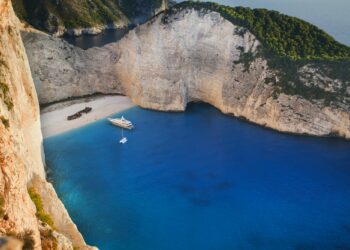Santa Ana is situated in the middle of El Salvador. This city is the second-largest city in the country and is worth a stop by. This is the best location if you are looking for another place to stay outside of San Salvador but are still interested in easy access to El Salvador’s sites.
From here, you can take day trips to see the colonial town of Metapan, Montecristo National Park, and Pompeii of Central America. if you have weeks ahead, you can pass through Honduras and enjoy a cruise in the Caribbean.
Affiliate Disclaimer: Our blog posts may contain affiliate links. If you make a purchase through these links, we receive a modest commission at no extra cost to you. These commissions help us fund our team of travel writers, allowing us to continue providing you with the latest travel news, tips, and inspiration. Your support keeps this blog alive and thriving, and we appreciate it immensely. Thank you!
Brief History of Santa Ana
Santa Ana’s history stretches far back into time to the pre-Columbian period. The area was initially inhabited by the Lenca tribes. During the later part of the 1200s, these tribes were soon faced with extinction.
The Sihuatehuacan tribes wiped out many of the original people in the area or made the ones their slaves. They were building up another great city that now sits in ruins, Nahuat also called “Place of Priestesses.”
Santa Ana was initially named by the Spanish by a well-known Guatemalan bishop named Bernardino Villalpando. It started as a small town and quickly grew into a major trade city in the early 1800s. The city traded extensively in coffee and sugar.

The lands around Santa Ana were very fertile because of the Santa Ana volcano. Past eruptions had made the volcanic ash that had flowed down the mountain some of the best places to grow crops in all of El Salvador. As a result, it became the wealthiest city in El Salvador and soon became the colonial seat of old money. With all their wealth and prosperity, the people of Santa Ana were able to build one of a kind masterpieces like the Santa Ana Cathedral, municipal building and theatre.
What to See
Santa Ana is a wonderful time machine in the way of old architecture and hospitality. The respective sights that you will see in this old city are within a short distance of one another. Most of the sites are located around the central town square of the city known as Parque La Libertad.
The main theatre is on the northern side of the town square, the Cathedral to the East, and if facing south, you will see the church. A little more to the west, and you will see the hustle and bustle of the town hall.
The Cathedral
The Cathedral in the Center of the Town square is uniquely fitting to the area. Its style of architecture is not seen in most of the surrounding neighbourhoods, which generally make it stand out quite nicely. There is a neo-gothic sense to the old-style architecture of this aluminous place.
Inside the magnificent structure is a large vaulted ceiling held up by massive columns that run in different colours down the edges of the sanctuary.

The Cathedral was originally built in the early 1900s and was dedicated around February 1913. However, there is one fantastic piece only seen in all of El Salvador. In the centre of this magnificent Cathedral, there is a dedicated altar to the Virgin Mary.
The alter is in the shape of the Cross pointing east. Along with this Cathedral of worship, several other small churches dot the area that does stick out each until made in their own way and represent the faith they represent. It is interesting to note how there are many different religions in this country of repression and turmoil. Yet, the differences are respected by the local population.
The Teatro de Santa Ana
The Teatro of Santa Ana is a renaissance-style building built at the turn of the century. It is said to be one of the most naturally acoustic theatres in all of Central America. The first performance in this unique theatre was performed by an Italian opera company in the early thirties called Rigoletto. After the human plays stopped being performed here and during the early 50s, it was restored to watch regular movies.
But due to the cost and maintain the theatre was soon abandoned, and it was allowed to decay until early 1979. Then, the people of Santa Ana decided to renovate this great piece of local history. It now stands in the original green that it was built with and is a wonder to see.

The interior of the theatre is still in the original marble that it was built with. Also, the original stained glass windows are centric on the central dome of the theatre. After restoration every weekend you can see performances played in this theatre and is a favourite of the national orchestras which regularly play.
The Municipal Building
The municipal building to the south is one of the original colonial-style buildings left from the era. This building attracts both history and architecture lovers the world over. Tourists are not allowed into the interior but can roam the outside in its beautiful gardens and sit in the shade of the enormous palm trees that blow overhead. Or take a slight dip in the central fountain and make a wish. There are some exceptional features of this building that you should notice, including the original wooden shutters and large clock tower that overhangs the main door of the building.
Fiestas
Fiestas are something that every tourist or visitor should experience here. Everyone likes a good party, right. No one can throw a party as they do in Santa Ana, especially at the Fiestas Julias. It is a festival that pays respect to the cities founding saint, the lady of Santa Ana. The festivities include the coronation of the queen and a colourful parade that dances down every city street. Marching bands and historical reproductions, as well as the food, are a number of the attractions. This is a prevalent celebration in Santa Ana, so book a hotel early if you want to experience it.

This is a beautiful place to visit. I highly recommend Santa Ana if you are passing through El Salvador or Central America. You can take a sip of your morning coffee as you watch the morning clouds roll in over the shadow of the volcano. This is the perfect city for a relaxed atmosphere outside of the hustle of San Salvador.











